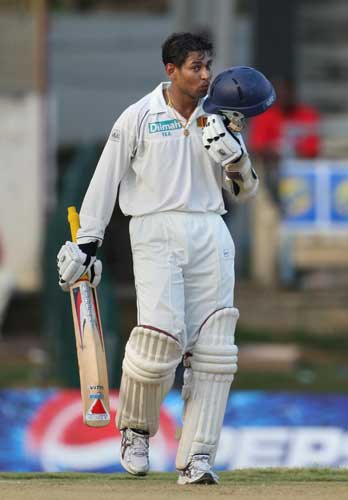Dilshan makes cricket history

Sri Lanka batsman Tillakaratne Dilshan became the first player to take advantage of cricket's new trial laws and successfully challenge an on-field umpire's decision today.
Dilshan was initially given out by umpire Mark Benson, adjudged caught behind off a Zaheer Khan delivery on the second day of the Test against India.
In the past, a batsman would have had no choice but to accept the umpire's verdict, but new laws being trialled in this test allow teams to refer on-field decisions to a third umpire under a challenge system.
Dilshan made a "T" signal with his hands to indicate a challenge, and third umpire Rudi Koertzen reviewed replays and ruled Dilshan not out. Replays suggested his bat hit the ground rather than ball to create the sound that prompted the India appeal.
Earlier, during the morning session, India captain Anil Kumble made the first-ever challenge when an appeal for lbw against Sri Lanka opener Malinda Warnapura was turned down, but he was unsuccessful in changing the original call. Koertzen upheld the on-field umpire's decision, adjudging that the ball would have missed leg stump.
This Test marks the beginning of the International Cricket Council's experimentation with the challenge system.
In addition to the existing use of the third umpire to rule on run outs and stumpings, players will now be able to challenge the likes of lbw verdicts — the trickiest and most subjective of all umpiring decisions — and catches.
Each side is allowed three challenges in each innings and the number of challenges remains intact if a decision is overturned using the system.
Join our commenting forum
Join thought-provoking conversations, follow other Independent readers and see their replies
Comments
Bookmark popover
Removed from bookmarks